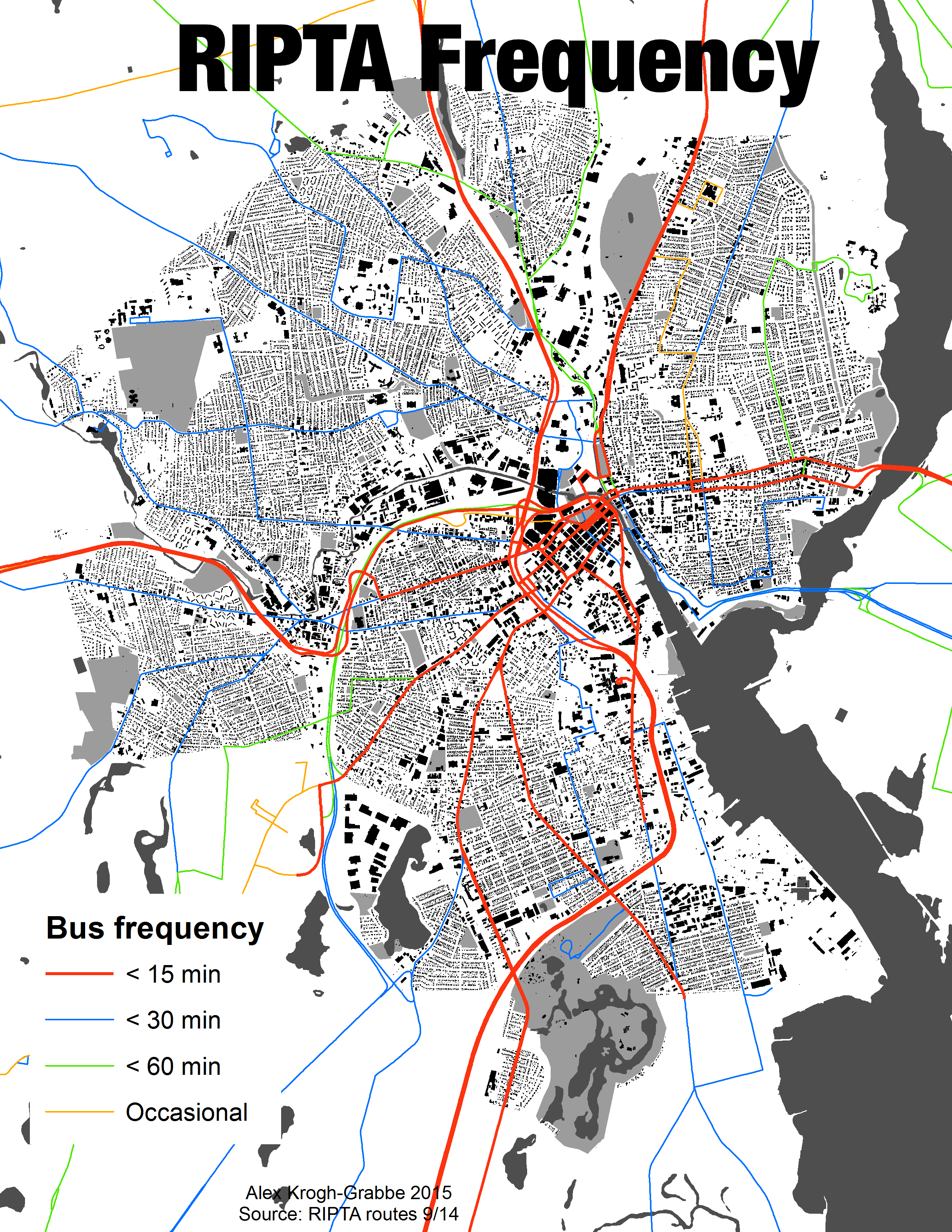 At the May 5 Senate Finance RIPTA budget hearing, RIPTA CEO Ray Studley projected a $1.4 million deficit this fiscal year, and about a $5.6 million deficit next year (which starts July 1), and said he is “running out of options” to reduce deficits without cutting service.
At the May 5 Senate Finance RIPTA budget hearing, RIPTA CEO Ray Studley projected a $1.4 million deficit this fiscal year, and about a $5.6 million deficit next year (which starts July 1), and said he is “running out of options” to reduce deficits without cutting service.
This deficit is mostly due to paratransit, or transit for people with disabilities. Changes to this program may cost RIPTA about $5.9 million next year due to elimination of the “Rhody 10” revenue and the shift of many clients from some DHS programs to unreimbursed but expensive ADA rides. There was also a loss of revenue due to changes at Johnson&Wales that reduced sales.
His “ask” to address this, as far as I can tell, was to refer to bill H6108 which seems to authorize RIPTA to charge a $1 fare to the 1/3 of all passengers who ride free, mainly low income seniors and the disabled.
It would also have the state make up any further subsidy needed as result of this reduced fare. Studley noted this is still more generous than federal requirements which allow full fare during peak hours. He indicated that with 5.6 million free rides/year, such a $1 fare with expected elasticity might produce about $3 million in additional revenue. He noted one reason for the high number of free rides is a generous qualification level at incomes up to 200% of poverty, Mr. Studley suggested consideration of lowering it to 150%.
It seems Pennsylvania and Illinois are the only other states having a comparable free ride level but those states explicitly make up the lost revenue with a state appropriation.
Studley also hinted at another gas tax hike dedicated to RIPTA, (there was a map of state gas tax rates in the power point) noted that is what happened last time RIPTA took a hit from changes in Medicaid transport policy. However, the gas tax is already going up 1 cent in July (RIPTA should get 5% of the additional revenue, about $210,000) and with MA gas tax 6.5 cents less than RI it will be a challenge to get the Assembly to boost it further.
The senators asked about fuel costs, the paratransit system, overtime expenses, but made no suggestions to close the deficit.
Charging low income seniors and disabled a fare is a sensitive subject but it is worthy of serious consideration as there seem no easy alternatives. Most passengers, RIPTA employees, and transit advocates who see the potential of transit to help our core cities, the economy and the environment, think the worst thing would be to reduce service, especially as lines with weak ridership have already been weeded out by the recent route study assessment. While a little revenue can be gained by higher fares on long distance park and ride expresses, a fare increase above $2 in the metro area may provide little additional revenue and would hurt the mostly low income working people who pay the fares.
I don’t expect much more help from the Governor. Channel 10 reported she stated her high priority was to end the car excise tax. That would be a boon to those households with many cars, or expensive cars, but at the expense of those without.
Perhaps RIPTA could do more to rebuild paying ridership which took a hit with the long KP construction and the snowstorms. It was also noted at the fare study hearing how little revenue was being generated by the employer-supported “ecopass.” Note that there is very limited support for Upass support from public colleges. For example, while Brown faculty and staff (as well as students) can ride “free” with Brown IDs, no such benefit is available to faculty and staff from CCRI, RIC or URI, not even at URI-Providence in the midst of congestion but with good transit access and where the “free” parking provided in the Convention Center garage is very expensive.
I welcome suggestions on how to proceed as does the RIPTA Riders Alliance.

